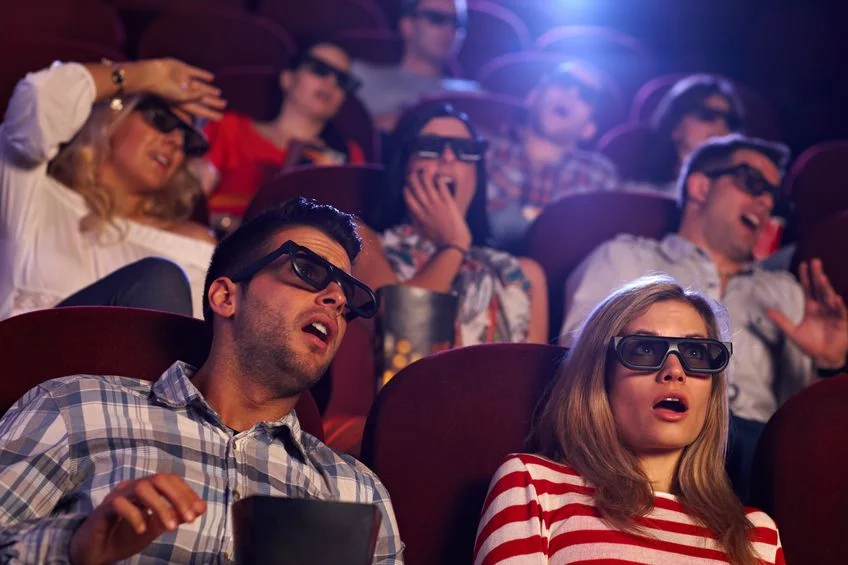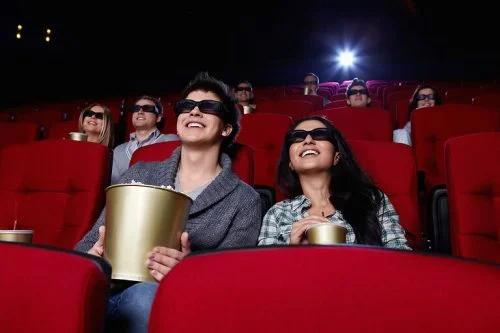
The experience of watching a 3D cinema is like none other. Avatar, a movie released in 2009 was the pioneer in this technology. It’s hard to imagine a technology used so widely in the world right now that was so scarce a decade ago that it made the movie highest grossing at that time. But, what goes on behind the scenes of a 3D creation is a mystery to many of you. So, let’s learn about how 3D movies work.
3D stands for 3- dimensional. A 2D cinema projected on a screen just has the dimensions of width and length. But A 3D movie has depth as an additional dimension. Think of it as a comparison between paper and a cube. You see the projection as if it’s happening around you in real life. 3D is not just a technology, but an experience. The functioning of 3D movies can seem complex, but it really isn’t.

How the human eye functions
Stereoscopy and stereoscopic vision replication is the primary aim of 3D projection. It gives you the experience that you are in the same world as the projection. You can even test your binocular vision with a simple trick. Extend your arm in front of you with both eyes open and then look at it with either of the eyes closed. This exact phenomenon of binary vision is used in 3D cinemas
Bottom line, 3D movies function in a way to replicate the images seen by the human eye at the same exact angle. They use 2 cameras fitted around a ring so it captures 2 different angles of the same image. The lens capturing images meant for the left eye would have a red filter and the lens doing the same for the right eye would have a blue/cyan filter.
CGI, a game changer
Cameras used for 3D are placed to resemble human eyes, adjacent to each other. Alternatively, some software can convert 2D films to 3D. To achieve the same effect, computer-generated imagery (CGI) would be needed. Animators do the same thing when making 3D animated movies. They create two versions of each individual picture to duplicate the perspective of each individual eye. It takes extra time even though it’s comparatively easier.
Anaglyph 3D
By using this arrangement, two different perspectives can be captured. Red-cyan glasses, commonly known as 3-D glasses, are used at the cinema to view both sets of images simultaneously on the screen. Anaglyph 3D glasses allow only the corresponding colour image to enter your eye due to the use of opposing colours used as filter lenses. Therefore, each eye is viewing a different perspective of the virtual object, similar to how a real object would be viewed. This stereoscopic 3D effect is known as anaglyph 3D. However, there was a downside to the anaglyph 3D method, namely that a movie could not be captured and viewed in full colour.
There are several different types of 3D technology in use today. The 3D glasses you wear will either use special shutters, colour filters, or polarised lenses to receive the images. Your brain takes care of the rest! For example, older (and some newer) 3D movies use red and blue lenses to ensure each eye only receives the image intended for it. As always, your brain puts the 3D effect together. Current movies use polarised glasses that follow the principle of light with different orientations. Newer 3D glasses are polarised to function in a way that does all this 3D processing automatically.

Our part in making a change
As we, Galalite Screens, celebrate 60 years of a successful journey in providing innovative cinema screen technologies, we collaborate with Sightsavers India for the campaign called ImagineSee.org. The main purpose of this campaign is to aid visually impaired children and to share awareness about preventive blindness. We welcome you to join this initiative, together let’s make them see it too.
Related articles



